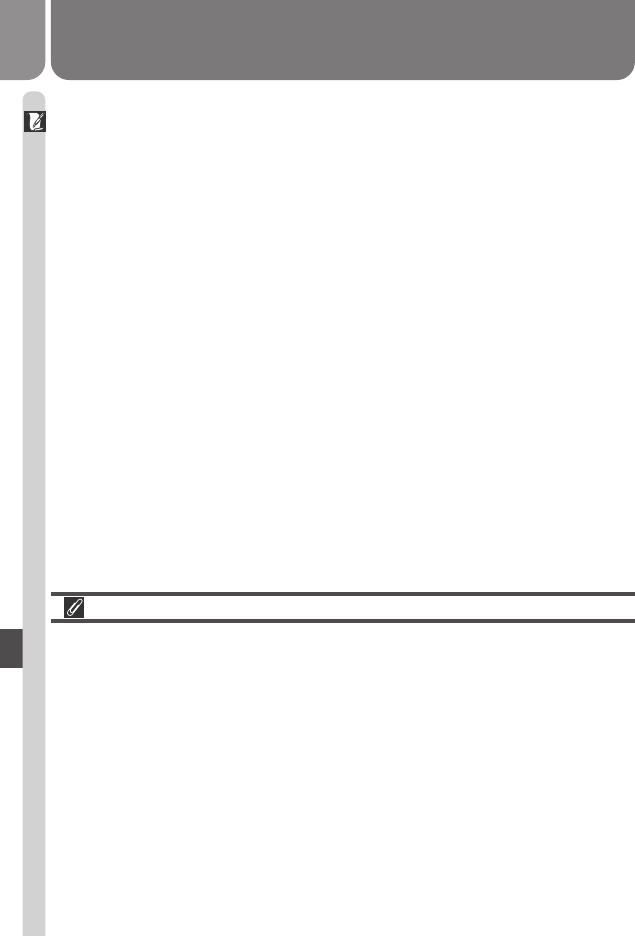
86
Technical Notes
Storage
When the camera is not in use, turn the camera off and return the lens sec-
tion to its housing in the camera body. To prevent mold or mildew, store the
camera in a dry, well-ventilated area. If you will not be using the product for
long periods, remove the battery to prevent leakage and store the camera in
a plastic bag containing a desiccant. Do not, however, store the camera case
in a plastic bag, as this may cause the material to deteriorate. Note that
desiccant gradually loses its capacity to absorb moisture and should be re-
placed at regular intervals. Do not store your camera with naphtha or cam-
phor moth balls or in locations that:
•are poorly ventilated or damp
•are next to equipment that produces strong electromagnetic fields, such as
televisions or radios
•are exposed to temperatures above 50 °C (122 °F) or below –10 °C (14 °F),
for example near a space heater or in a closed vehicle on a hot day
•are subject to humidities of over 60%
To prevent mold or mildew, take the camera out of storage at least once a
month. Turn the camera on and release the shutter a few times before put-
ting the camera away again.
Store the battery in a cool, dry place.
Batteries
•When you turn the device on, check the battery-level displayed in the moni-
tor to determine whether the battery needs to be replaced. A warning will
be displayed when the battery needs to be replaced.
•Ready a spare battery and keep it fully charged when taking pictures on
important occasions. Depending on your location, you may find it difficult
to purchase replacement batteries on short notice.
•On cold days, the capacity of batteries tends to decrease. Be sure the bat-
tery is fully charged before taking pictures outside in cold weather. Keep a
spare battery in a warm place and exchange the two as necessary. Once
warmed, a cold battery may recover some of its charge.
•Should the battery terminals become dirty, wipe them off with a clean, dry
cloth before use.


















